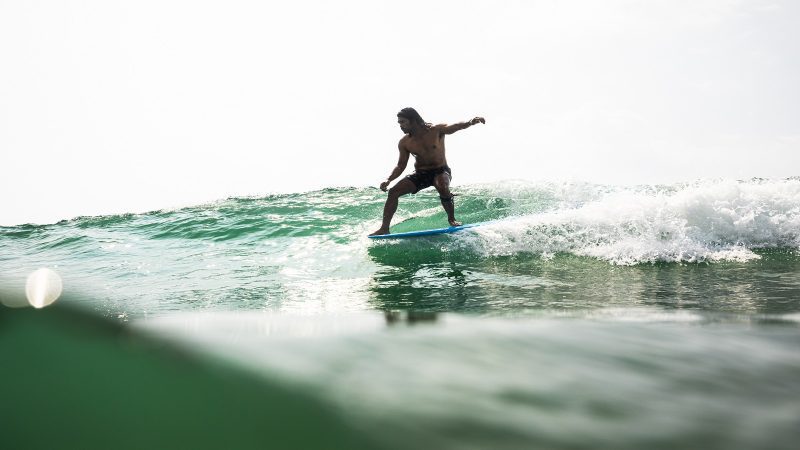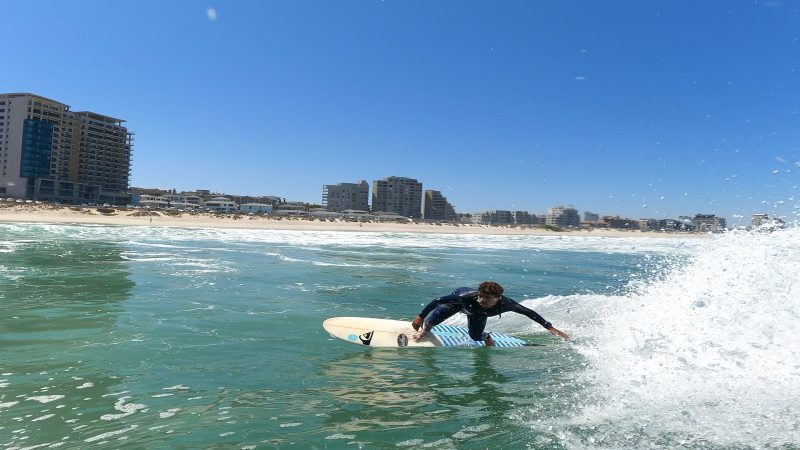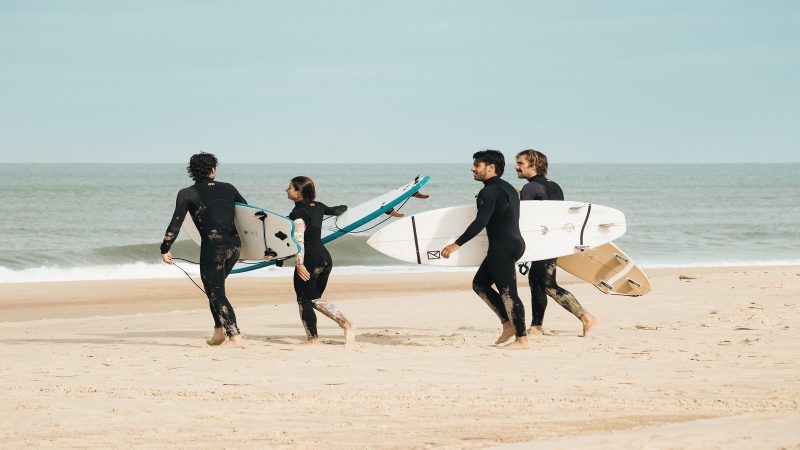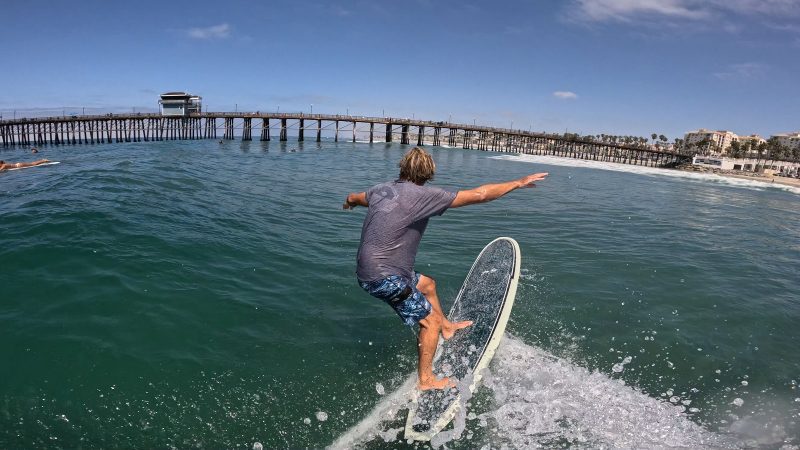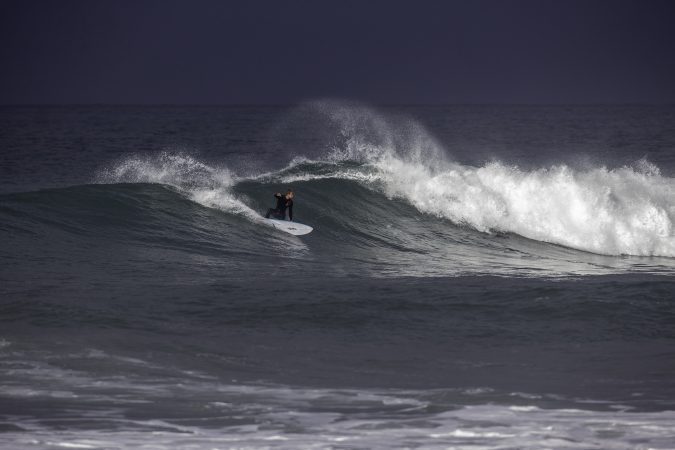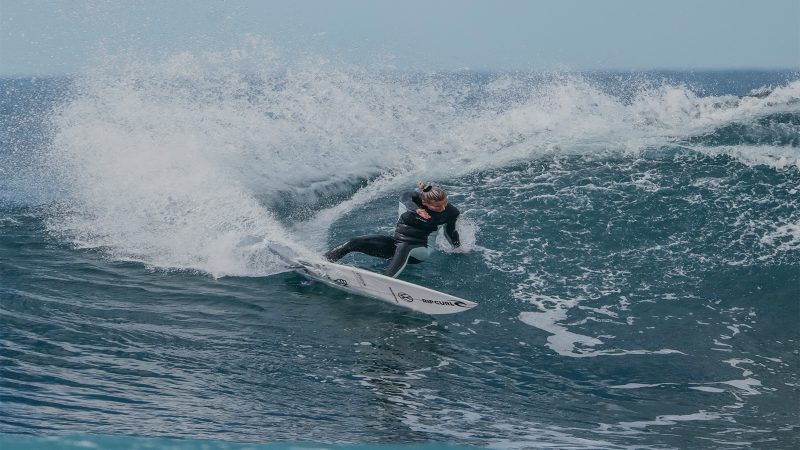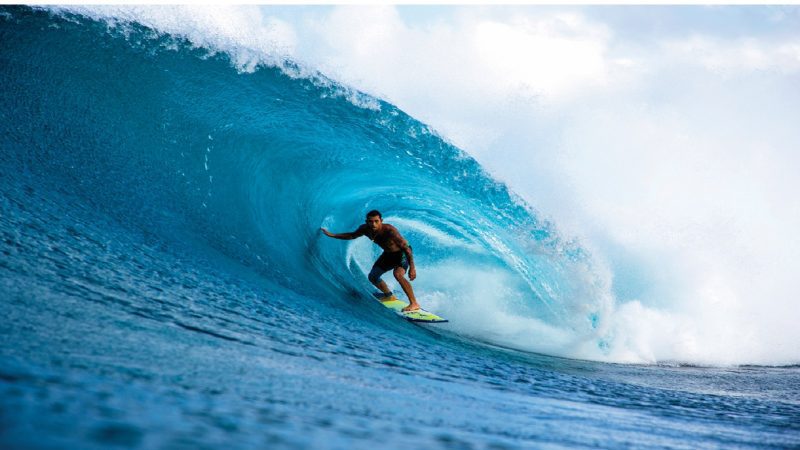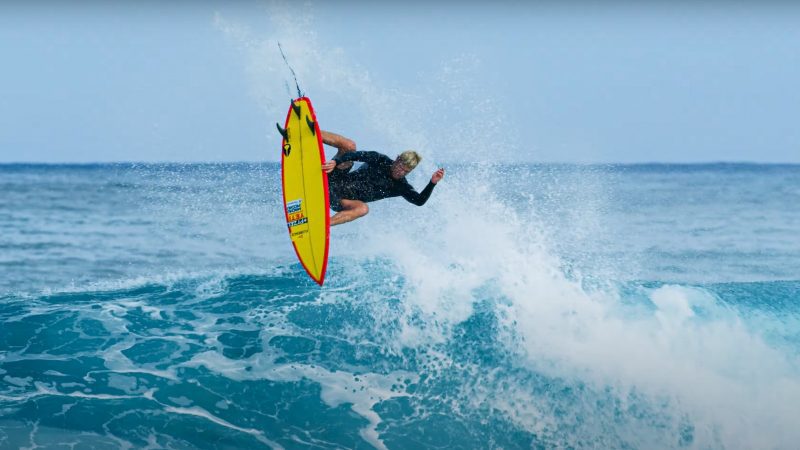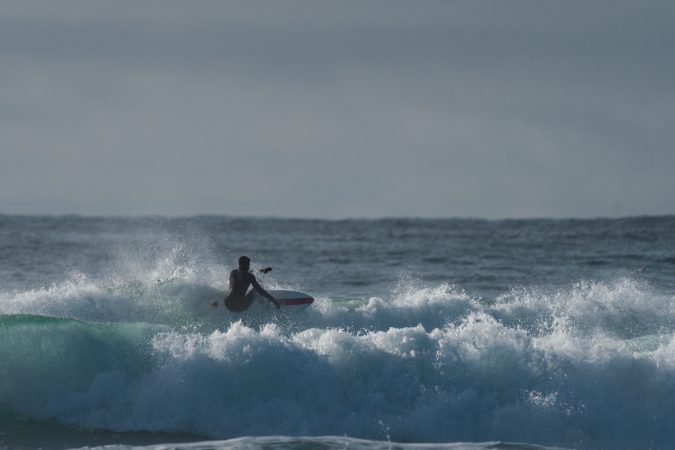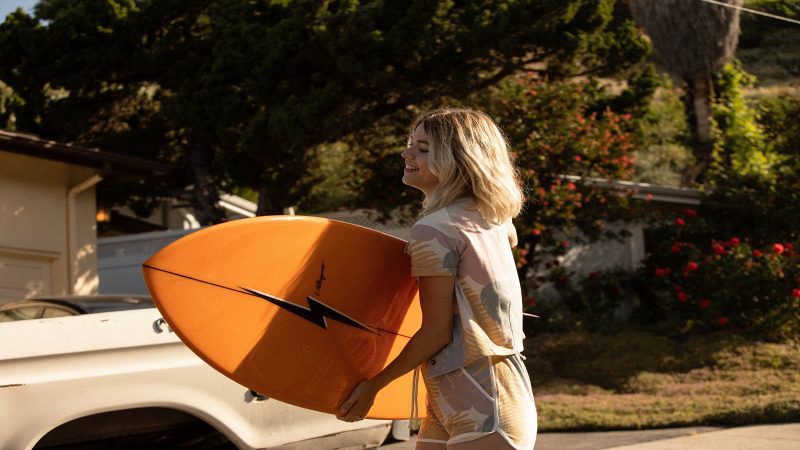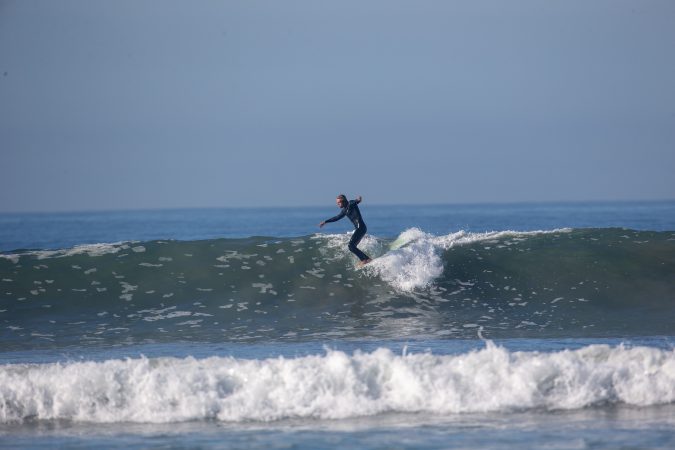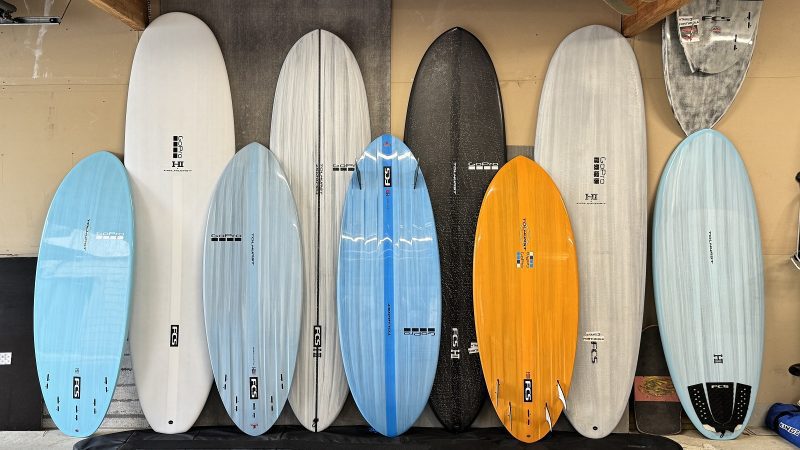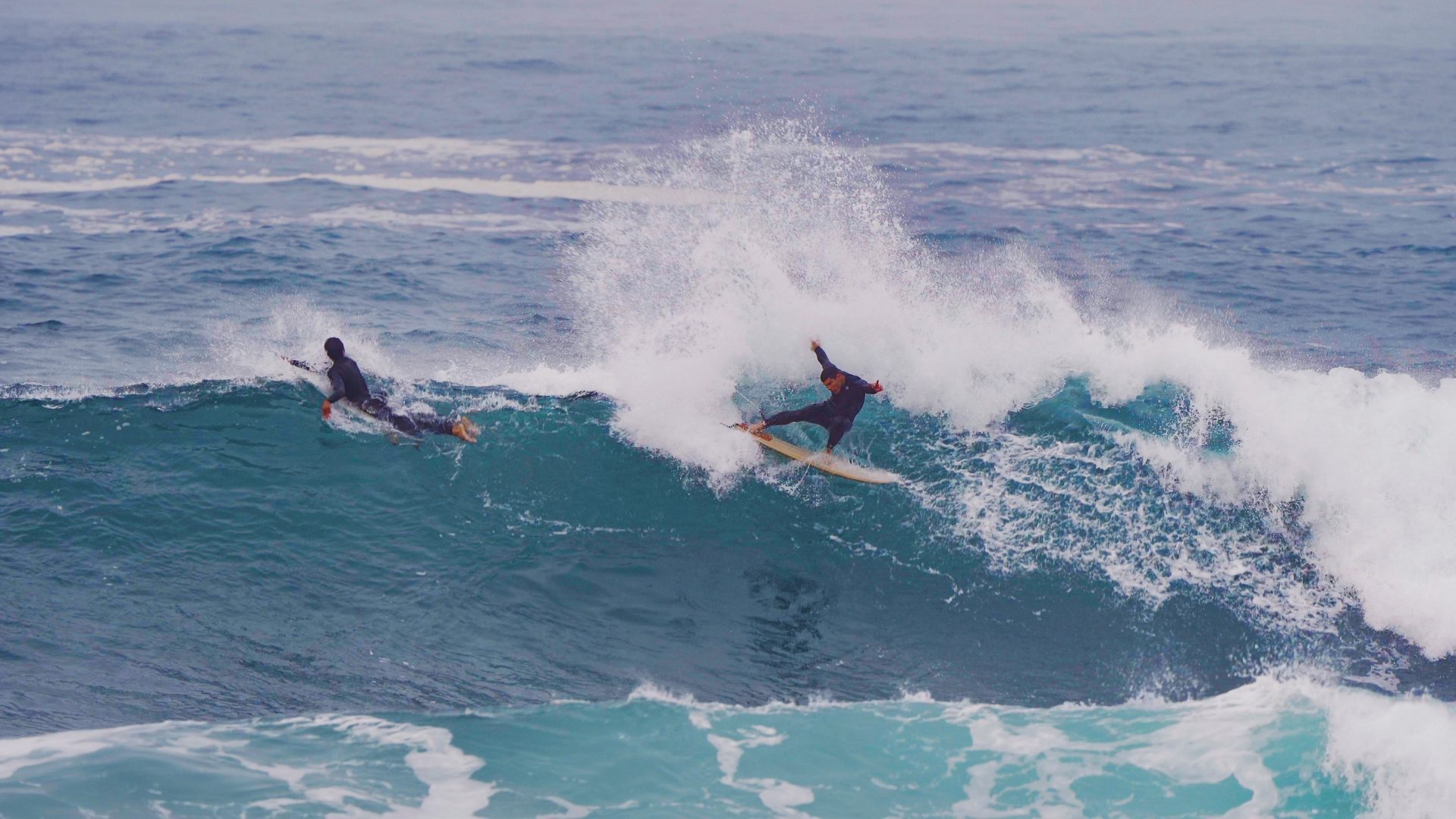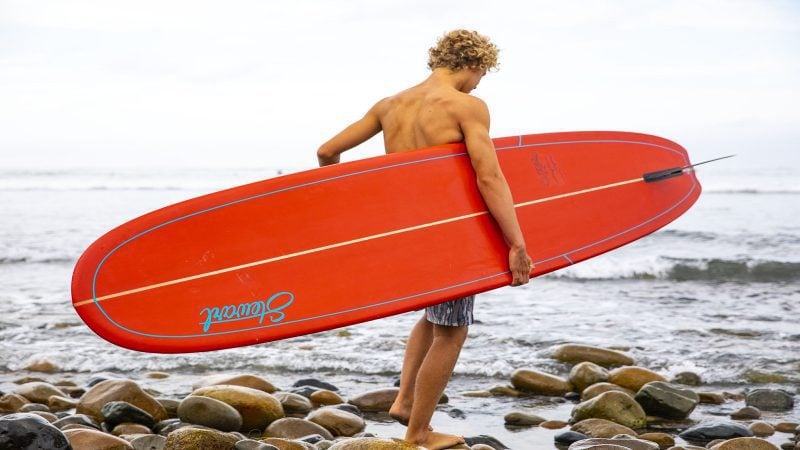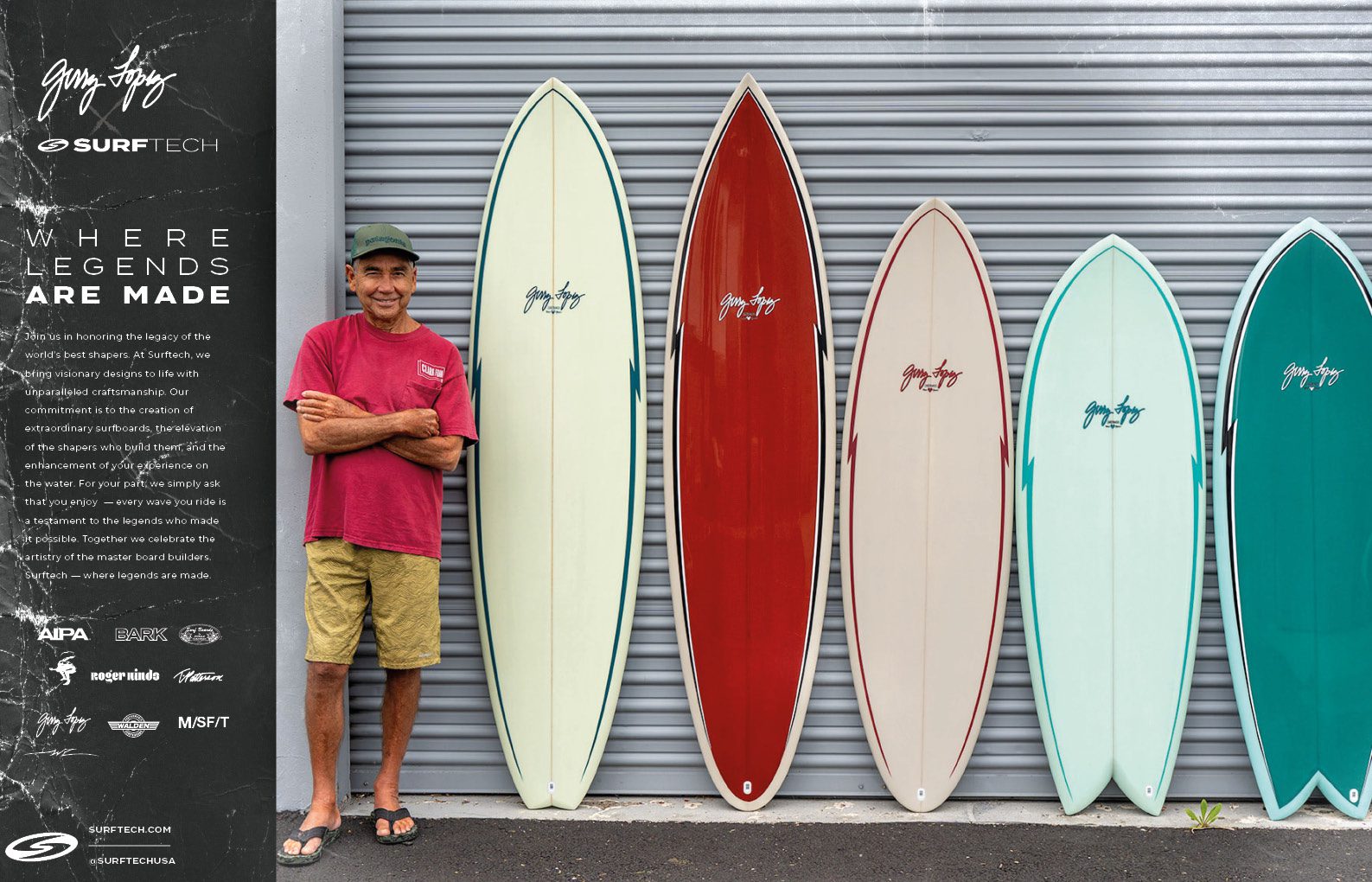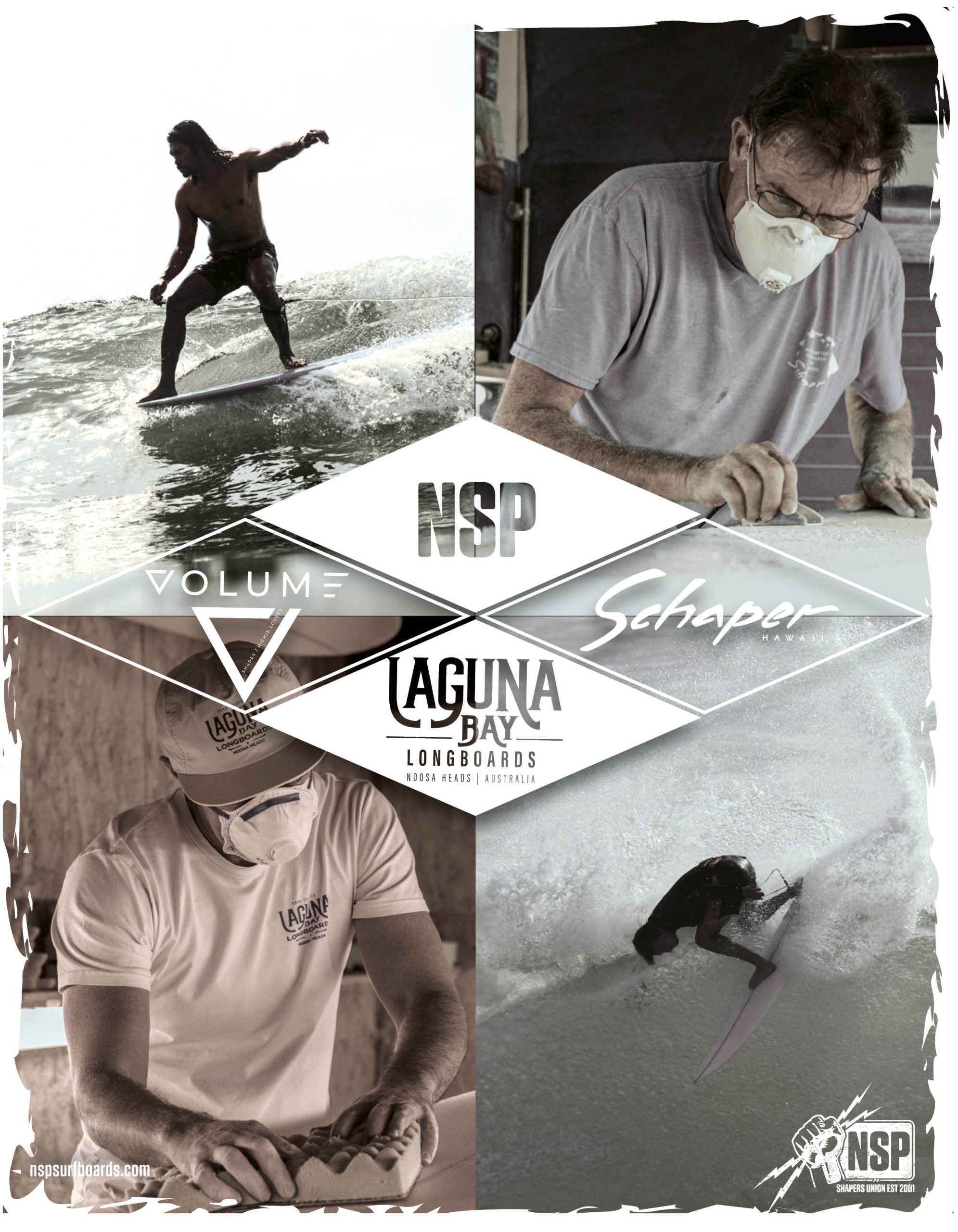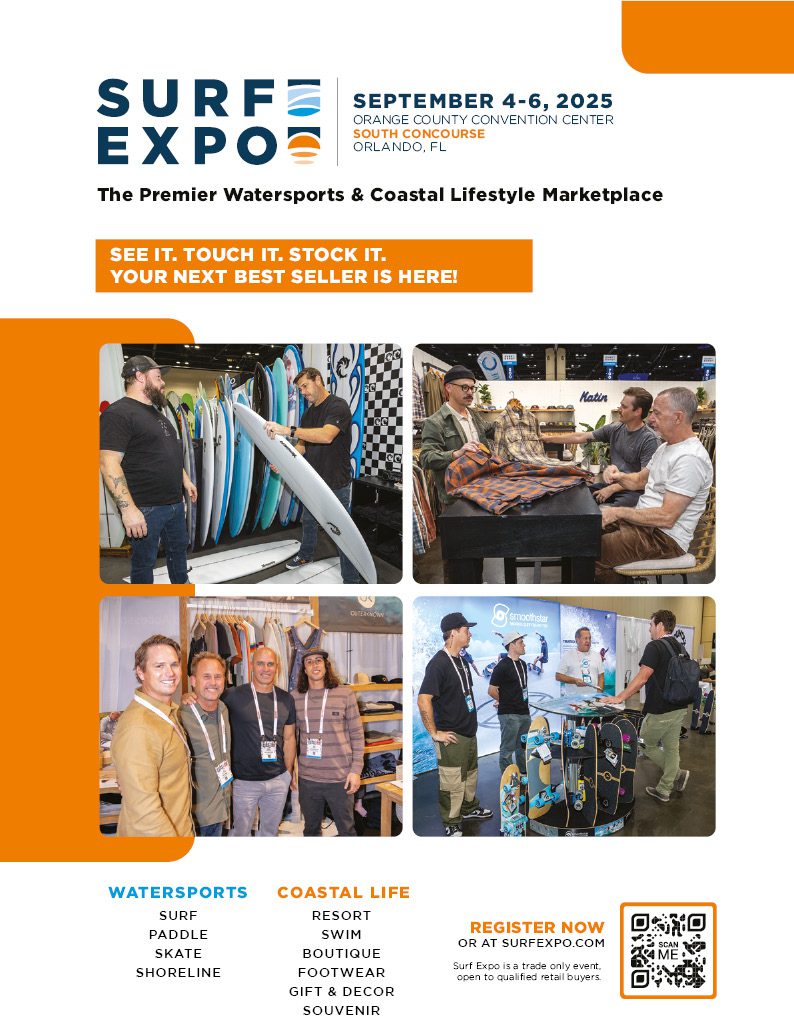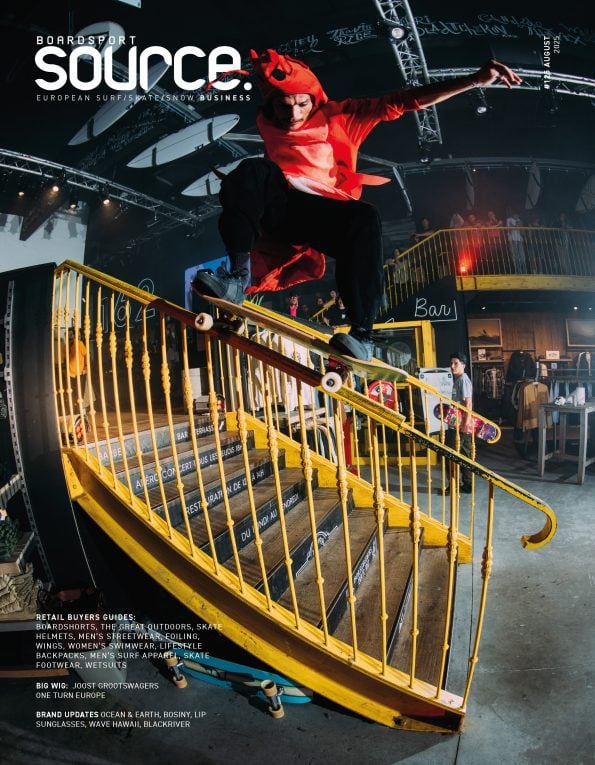Surfboards 2025 Retail Buyer’s Guide
The OG boardsport of our business has sailed rough seas for a century and displayed resilience skills which could inspire the rest of the bunch. See how quick the surfboard market recovered from the pandemic aftermath and thrives every time it relies on quality over volume. By David Bianic
As the very pioneer of the D2C channel back in the mid 1950s, surfboards makers traditionally had no problem meeting their demand just right, as everything manufactured was on a custom order basis. And then came the surf shops, and then, much later, e-commerce. They distanced the surfboard labels from the end consumer, until numbers did not match anymore. Too many boards, too few buyers. Yep, the post-covid big void. The aftermath has left retailers way more cautious, as seen at Cabianca Surfboards, “where shop orders once formed the backbone of our business, we now rely primarily on direct-to-consumer sales”, says the owner Johnny Cabianca.
Retailers went for the safe choice, adds Rémi Chaussemiche, Marketing Director at Sample N’Co (Pyzel, LIB Tech, Stewart, Thunderbolt), as they relied on the biggest labels and stayed relatively conservative on their offer. The resulting situation is that pre-orders took a massive hit and “surfboard manufacturers and distributors are expected to hold more inventory for retailer demands” tells Nigel Gibb, Head of Sales for Surftech Europe. But this is the big picture. When you monitor the market more closely, not everyone is in the same boat. “If you divide the market into customs, stock boards and generic boards, the underbelly of the market with cheap low-quality boards is definitely still suffering with a wide offer of poor-quality boards”, thinks Wilco Prins, President of T&C Surf Designs, while “custom boards and high-end quality boards are definitely doing a lot better”. In order to compete with the cheap offerings, Euroglass developed its second-hand program, called The Cave, “which continues to perform really well”, says Owner Stephen Bell, as “it provides quality options at accessible prices, backed by our expertise and service – something no-name brands can’t replicate”.
Shortboards: grovelers
In a not-so-distant past, you would ride the same shortboard all year long. Then came the “summer board”, an aptly named design which makes gutless conditions fun and easy. Why couldn’t we have “fun” and easy” the rest of the year then? The summer boards designation transitioned into “grovelers”, but they rule any season. “A little while ago the grovelers looked like Boogie-Boards with a surfboard outline, that luckily is changing now”, tells Andy Wirtz from Norden Surfboards, as he has seen the grovelers getting longer, a bit more stretched out and with more refined shapes, “at least that’s what our customers are asking for”.
At Pyzel Surfboards, “groveler is an important category as it is what most of the surfers usually surf in average conditions”, says Rémi, speaking of their Gremlin, Mini Ghost and Precious shapes. Grovelers go a long way as proven by Semente’s Jig, “a revival of what was Jose Gregório’s (3x Portuguese champion) secret weapon for small to medium contest surf back in his competitive days”, says Nick Uricchio, co-founder. Take a low rocker line with a single concave to an accentuated vee in the tail, with tons of speed through the center of the board and a wide but still swallow tail, and you have the Jig: “Foam is your friend and this model has got some.”
At T&C Surf Designs, basically the whole shortboard range focuses on that reinterpretation of the past. The Saint and The Sinner, shaped by Glenn Pang takes the 80s style twin of Martin Potter into the 2K, while the Dragon Fly hints towards the boxy thrusters of the second half of the 80s with the sprays fluro kids will love. The versatility of those designs grew on surfers as they could handle more size as well. And this is the program the Eggplant at Kanoa Surfboards, a low entry rocker, wide nose, and generous planning surface, which “shines in smaller surf but features like the tapered squash tail, thin rails, and Spider Murphy’s refined rail work keep it fast and responsive when the waves step up”.
Fish: back to the future
Sure enough, fish boards would fit in the above groveler section, but they deserve a proper paragraph of their own as the design’s hype gained further momentum with surfers like Mikey February on the CI Fish and now his Feb’s Fish pro-model, again from Channel Islands Surfboards. NSP offers an extensive list of fish iterations, with two revamped models for 2025, the classic Double Vision and a more versatile option, the Fish Elements. Back in the surfshops racks, Lightning Bolt unveiled stunning “soul machines” which carry on the brand’s heritage. The outline of their Quad Fish screams ‘speed’, while the quad fin setup delivers more control than the sometimes sketchy keel fins. Once – and always – a legend on those lightning-themed models, Gerry Lopez collaborates with Surftech under his own label: his Something Fishy design, is a classic Steve Lis outline built with advanced technology, offered in Surftech’s Fusion HD construction.
Let’s wrap it up with the Bosiny Loony Moon, a new entrance in their design line-up: the twinzer-fin fish with channel is quite a piece of art in their proprietary hollow/wood technology (more on that later) : “The straight rails through the back two-thirds give projection, with a built-in release point for smooth transitions”, comments Alex King, co-founder/engineer.
Shortboards: high-performance
It is no secret that the high-perf shortboards have beefed up since the end of the 90s and yet progressive surfing is next level compared to that era. The grovelers infused their small-wave bulkiness in the high-perf models, while the latter maintained a rather streamlined outline. “It’s all about sneaky foam distribution and smart curves. We tuck in volume where you need it, under the chest for paddle power, around the rails for forgiveness but keep the outline sleek and spicy”, reveals Zoé Levit, Brand Marketing Manager for Kanoa Surfboards. It’s all about the details, as seen on Glenn Pang’s Crankshaft and Dreamwaver at T&C Surf Designs. The Crankshaft has a slightly fuller outline combined with a low entry rocker which excels on the flats, while the Dreamweaver has a more pulled in outline and deeper concaves between the fins, making the board turn quicker. With its Program X board, ENVY Surfboards took a hybrid approach between the manufactured series and the bespoke surfboards, as “Project X is the board we use as base for the customised program”, says Nuno Viegas, Owner. The design is then fine-tuned to meet the riders goals. The Stab in The Dark contest has been a springboard for high-perf designs and the 2021 winner (attributed by Taj Burrow), Sharpeye’s Inferno 72 remains a blue-chip among advanced surfers for its refined blend of speed and responsiveness.
Midlengths: one board to unite them all
Anything between 7’ and 8’11’ is a “midlength” says Andy Wirtz at Norden Surfboards: “It’s not only the single fin egg type shape, it can also be a fish, a big boys shortboard or a simple Mini Malibu.” They did what no other designs could before them: “Their versatility makes them ideal for surfers stepping down from longer boards or performance riders looking to bridge the gap and boost their wave count”, sums up Jarrason Bitton, Design & Communications Manager for NSP. Midlengths are a key part of their range, with popular models such as The Speedline by Laguna Bay (shaped by Tully St John) and the Cheetah CSE by Carl Schaper. Among the designs which could appeal to the more performance-oriented riders, the new Nomad from Bradley Surfboards (available at Bell Surf) “combines the stability of a mid-length with subtle performance features for fluid direction changes and confident rail engagement”. Slightly narrower than the other mids, the Nomad provides better trimming and wave entry on steeper faces.
From single-fin to 2+1 fin set-ups, the trend moved to twin-fins and many have updated their offer with a twin option of the specific design. Hence Pyzel’s Mid Length Crisis now available as the Crisis Twin, as they saw consumers throwing twin-keel fins in the original 2+1 Crisis, “but the fin placement wasn’t optimal for control and performance”. Add some channels to the twin set-up and you have got yourself a winner, like the Kanoa Twin Tonic.
Playing with fins on mids goes even further in 2025, as seen on Surftech’s constructions, with Duke Aipa’s The Big Boy Sting (US Box single fin with a Futures quad option) and The Mini Mega Magic by Walden (5 fin setup).
Surftech x aipaBut if you would rather keep it simple, Surftech offers a more classic design like the timeless Tamago egg by Roger Hinds, “a true one-board quiver”. But if you consider that less is more, nothing beats (at least to the eye) the classic curves of the Lightning Bolt single-fin guns and mini-guns. “A true collector’s piece that rides beautifully” which clearly sits in the throwback category among midlengths, “as a tribute to the iconic Bolt boards of the 70s”.
Longboards
Long gone is the short vs long rivalry. The longboard adoption is truly amazing and even the die-hard shortboarders now own one in their quiver. But not just any longboard: a classic one, a log. Yet the transition isn’t as easy for shapers, suggests Nigel at Surftech. “I think it would be hard for a performance shaper to break into this market of traditional legendary shapers.” At Surftech, longboards are part of the DNA of the brand and having legends such as Donald Takayama (RIP), Walden, Wayne Rich, Gerry Lopez and Roger Hinds in our stable it solidifies our dominance in the market.”
A statement proven consistent with the ongoing success of The Takayama In the Pink noserider in Tuflite Pro construction, while adding fresh designs like Wayne Rich’s Wildcard 3 and its distinctive squared nose and crescent tail (hand drawn by Joel Tudor, no less). Thunderbolt is a newcomer on the European market with its own take on the ‘classic meets advanced construction’. Using EPS blanks with no central wooden stringer, they rely on modern construction methods with PVC shells, carbon/fiberglass and vacuum-bagged lamination, in 3 constructions (Black, Red, Silver). Their collabs with CJ Nelson, Harley Ingleby, Kai Sallas and Ben Skinner gave birth to unique designs like CJ Nelson’s Parallax Plus (classic long hull inspired by Nat Young during the summer of 68) or Ben Skinner’s Double Scoop, which uses a spoiler effect (a deep double concave shaped into the deck) capturing the water flow onto the deck, thus holding more water to create the extra lift for noserides!
In the same (old-school meets new school) vein, Bosiny Surf offers a whole range based on its unique technology. In place of the foam blank, they use an Air Core, a hollow construction made in paulownia wood, glassed with bio-epoxy into a combination of kevlar reinforcement layer (aerospace-grade aramid layer) and paulownia skin. The resulting boards are absolutely stunning, and they do work great. Their short boards weigh in at under 3kgs, with a powerful flex pattern, placing them amongst other high performance short boards in the market, without the carbon footprint… watch this space for FiberFlex tech coming soon!
Torq now joins the classic fest with a couple Edouard Delpero models, The Pig and The Classic, designed by French log master Alain Minvielle, in Torq’s TEC construction for a fine mix of weight/durability. “With Edouard’s input they have created a Classic shape inspired by the classic 60’s model of Longboarding (no edge) while adding some more modern bottom line to find the perfect cruiser with surprising manoeuvrability”, explains Sebastian Wenzel, General Manager.
If you are looking for more progressive longboard shapes, look over Stewart’s range and its latest release, the Bird: it has the grace of a classic single fin, with the power, speed, and maneuverability of a more high-performance longboard. Even more aggressive, the Stewart CMP has won four world longboarding titles, “designed to go rail to rail with the ease and speed of a shortboard”.
Bottom-line
Going full circle, let’s rewind to our introductory paragraph: all surfboards aren’t born equal. While the cheap semi-industrial surfboards aim for volume, bearing the risk of overproduction, customs and high-end quality surfboards rely on a sound relationship with the consumers, meeting their demand just right. They thrive, pretty much as they always did. The closer retailers are to the end buyers, the better they do. Leave the cheap thrills to the online players and megastores, go for the real thing. Margins and consumer loyalty will prove you right.
























